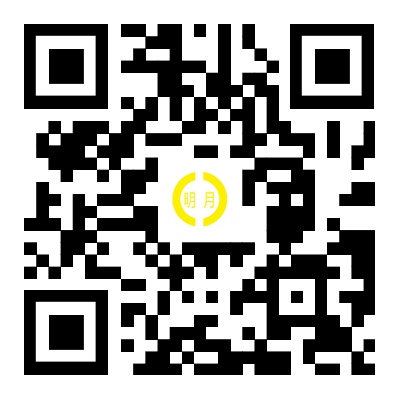
- English
- 简体中文
- Español
- Português
- русский
- Français
- 日本語
- Deutsch
- tiếng Việt
- Italiano
- Nederlands
- ภาษาไทย
- Polski
- 한국어
- Svenska
- magyar
- Malay
- বাংলা ভাষার
- Dansk
- Suomi
- हिन्दी
- Pilipino
- Türkçe
- Gaeilge
- العربية
- Indonesia
- Norsk
- تمل
- český
- ελληνικά
- український
- Javanese
- فارسی
- தமிழ்
- తెలుగు
- नेपाली
- Burmese
- български
- ລາວ
- Latine
- Қазақша
- Euskal
- Azərbaycan
- Slovenský jazyk
- Македонски
- Lietuvos
- Eesti Keel
- Română
- Slovenski
- मराठी
Guide to Diagnosis and Troubleshooting of Connecting Rod Bearing Failures
2025-07-21
The connecting rod bearing (also known as the rod bearing) is a critical component between the engine crankshaft and connecting rod, responsible for bearing combustion pressure and inertial forces. Once it fails, it may cause severe engine damage. Below are common failure symptoms, diagnostic methods, and corrective measures.
I. Common Failure Symptoms and Causes
1. Bearing Wear (Abnormal Wear)
Symptoms:
Engine knocking (low-pitched knocking sound that increases with RPM).
Low oil pressure (oil pressure warning light illuminated).
Metal debris in the oil (magnetic drain plug collects metal particles).
Possible Causes:
Poor lubrication (insufficient oil, clogged oil passages, degraded oil).
Improper installation (excessive or insufficient bearing clearance).
Overloading (prolonged high RPM or heavy load operation).
Crankshaft journal wear/deformation (leading to uneven contact).
2. Bearing Overheating (Babbitt Layer Melting)
Symptoms:
Sudden severe engine knocking, possibly followed by stalling.
Large amounts of metal particles in the oil, or even peeling of the bearing alloy layer.
Possible scoring on the crankshaft and connecting rod big end.
Possible Causes:
Oil failure (loss of oil film due to incorrect viscosity or contamination).
High-temperature operation (cooling system failure or overloading).
Insufficient bearing clearance (preventing oil film formation).
Bearing material defect (poor bonding of the alloy layer).
3. Bearing Alloy Layer Peeling
Symptoms:
Regular knocking sound during engine operation (similar to a "tapping" noise).
Metal particles found in the oil filter.
Cracks or flaking of the bearing alloy layer.
Possible Causes:
Long-term overloading (e.g., diesel engines operating under heavy load).
Substandard bearing material (poor-quality bearings or exceeding service life).
Crankshaft misalignment or deformation (causing localized stress concentration).
4. Uneven Bearing Wear (Partial Wear)
Symptoms:
Severe localized wear (e.g., excessive wear on one edge).
Crankshaft journal may become oval or tapered, with knocking sounds varying under load.
Possible Causes:
Bent or twisted connecting rod causing uneven load distribution.
Excessive crankshaft axial or radial run out.
Improper bearing alignment during installation (e.g., thrust washer failure).
II. Diagnostic Methods
1. Stethoscope Method (Knocking Sound Detection)
Use a mechanical stethoscope or a long screwdriver (place one end on the engine block and the other near your ear) to listen under idle, acceleration, and varying load conditions:
Mild wear:"Tapping" sound at low RPM, increasing with speed.
Severe wear/overheating:Low "thudding" sound, possibly accompanied by engine vibration.
Loose bearing:Most noticeable at idle, diminishing under acceleration.
2. Oil Inspection
Oil condition:Presence of copper or silver particles indicates bearing wear.
Oil pressure:Idle pressure below specification (e.g., <0.8 bar) suggests lubrication issues.
3. Disassembly Inspection
Remove the oil pan to check for metal debris; disassemble the connecting rod cap to inspect the bearing surface:
Wear:Uniform reduction in alloy layer thickness with visible scoring.
Overheating:Localized blackening, melting, or adhesion to the journal.
Peeling:Chunks of alloy layer missing, exposing the base metal.
Uneven wear:One-sided or localized wear with irregular contact marks.
4. Precision Measurement
Use an inside micrometer to measure bearing inner diameter and an outside micrometer to measure journal diameter. Calculate clearance (must match OEM specs, e.g., 0.02–0.05 mm for gasoline engines).
Check connecting rod straightness with an alignment gauge (deviation >0.05 mm/100 mm requires correction).
III. Troubleshooting and Repair Measures
1. Minor Wear (Repairable)
Replace bearings:Use OEM or high-precision replacements, ensuring proper clearance.
Inspect crankshaft:Polish minor journal scratches; severe wear requires regrinding and oversize bearings.
Flush oil system:Replace oil and filter to ensure clean lubrication.
2. Severe Wear/Overheating (Major Repair Required)
Replace bearings and crankshaft (or regrind):Replace if journals are heavily damaged.
Check connecting rod alignment:Measure with precision tools; replace if deformed.
Thoroughly clean oil system:Include oil pump and passages to prevent secondary damage.
3. Preventive Measures
Regular oil changes:Follow manufacturer intervals to avoid oil degradation.
Avoid prolonged overloading:Prevent excessive high-RPM or heavy-load operation.
Proper installation:
Ensure correct bearing clearance (typically 0.02–0.05 mm, refer to manual).
Tighten bolts to specified torque (e.g., cross-tighten in 2–3 stages).
IV. Post-Repair Testing
Initial startup:Idle for 5 minutes; monitor oil pressure and knocking.
Load test:Gradually increase RPM to check for abnormal vibrations/noises.
Oil re-inspection:Change oil after break-in; check for new metal particles.
Conclusion
Connecting rod bearing failures are typically caused by poor lubrication, improper installation, or overloading. Early diagnosis (e.g., knocking, low oil pressure) prevents catastrophic damage. Repairs must ensure correct clearance, clean oil passages, and inspect crankshaft/connecting rod conditions. Regular maintenance is key to extending bearing life!
Dafeng Mingyue reminds everyone:To prevent escalating damage, adopt the principle of "early detection, early diagnosis, and early correction," targeting specific parts for replacement or repair.




